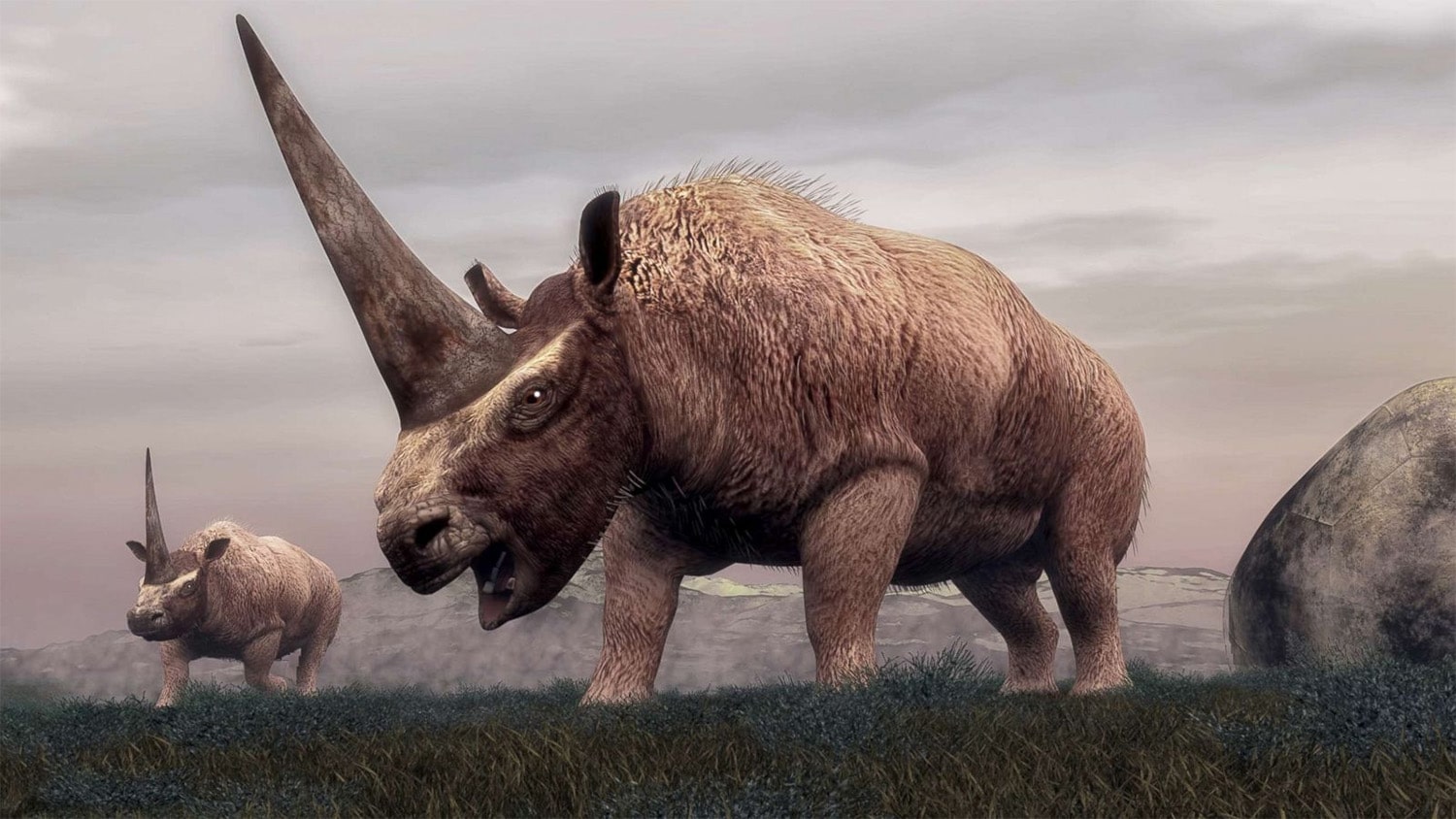
27 interesting facts about Elasmotherium (Siberian Unicorn)
- 👁️ 278
Elasmotherium, commonly known as the Siberian Unicorn, is an extinct genus of large rhinoceros that once roamed the vast plains of Eurasia. With its distinctive single large horn on the forehead, which is thought to have inspired unicorn legends, Elasmotherium has fascinated scientists and the public alike. Unlike the mythical unicorns of lore, the Siberian Unicorn was a real creature that lived during the Late Pliocene to the Late Pleistocene epochs, approximately 2.6 million to 29,000 years ago. This magnificent beast was one of the last surviving members of the Pleistocene megafauna, coexisting with early humans. Let’s explore some interesting and informative facts about Elasmotherium that highlight its life, characteristics, and the mysteries surrounding its extinction.
- Elasmotherium’s name means “plated beast,” referring to the presumed plate-like ossifications in its skin.
- It weighed up to 4 tons and measured up to 5 meters (16 feet) in length, making it one of the largest rhinoceroses ever to have lived.
- Unlike modern rhinos, Elasmotherium had a single, massive horn on its forehead, which could grow up to 2 meters (6.6 feet) long.
- The horn was likely made of keratin, the same material as human fingernails, rather than bone.
- Its legs were longer compared to other rhinos, suggesting it was adapted to running at high speeds across the open steppe.
- Elasmotherium is believed to have had a thick, woolly coat, helping it survive the harsh, cold climates of the Ice Age.
- Fossil evidence indicates that Elasmotherium primarily fed on tough, dry grasses, using its flat, grinding teeth.
- It lived across a vast range that stretched from the Don River in Russia to east of modern-day Kazakhstan.
- Radiocarbon dating of Elasmotherium fossils suggests that it survived until at least 39,000 years ago, much later than previously thought.
- The Siberian Unicorn’s closest living relatives are the Sumatran rhinoceros, the smallest living rhinoceros species.
- Unlike the solitary rhinos of today, some scientists speculate that Elasmotherium might have lived in small herds or families.
- The extinction of Elasmotherium is thought to have been caused by a combination of climate change, habitat loss, and possibly human hunting.
- Early depictions of unicorns in ancient art and literature may have been inspired by Elasmotherium skulls or fossils.
- Its skull was markedly elongated and low, with the nasal cavity positioned far forward, providing a strong base for its massive horn.
- There is no evidence that Elasmotherium had two horns, as is common in most modern rhino species.
- The first scientific description of Elasmotherium was made in the early 19th century by German paleontologist Gotthelf Fischer von Waldheim.
- Elasmotherium’s thick, woolly fur would have made it resemble a mammoth more than a modern rhinoceros.
- Despite its fearsome appearance, it was a herbivore, with its diet consisting almost entirely of grass.
- Theories suggest that the horn of Elasmotherium could have been used in mating rituals, combat with predators, or foraging for food under snow.
- Some paleoart depicts Elasmotherium with a large, fleshy lip, similar to that of a modern black rhinoceros, to help it grasp grass.
- Fossils of Elasmotherium have been found in riverbank deposits, suggesting it may have frequented water sources similar to modern rhinos.
- Genetic studies have attempted to resolve the evolutionary relationship between Elasmotherium and other rhinoceros species.
- Elasmotherium’s large size and specific dietary needs likely made it vulnerable to environmental changes at the end of the Ice Age.
- The creature’s habitat ranged from woodland to grassland environments, indicating a degree of adaptability.
- No complete skeletons of Elasmotherium have been found, with most knowledge coming from skull, teeth, and partial bone discoveries.
- Elasmotherium represents a significant example of Pleistocene megafauna, illustrating the diversity of life forms during this epoch.
- Its extinction marks the end of the unique lineage of giant rhinoceroses that once roamed Eurasia.
Elasmotherium, or the Siberian Unicorn, was a remarkable creature that roamed the earth thousands of years ago. Its unique physical characteristics and adaptation to the harsh environments of the Pleistocene epoch make it a fascinating subject of study for paleontologists and an intriguing figure for the public. The legend of the unicorn, inspired by such real-life giants, reminds us of the wonders of our planet’s past and the importance of preserving its history and biodiversity. As research continues, we hope to uncover more about Elasmotherium and the world it inhabited, shedding light on the mysteries of prehistoric life.
Elasmotherium, commonly known as the Siberian Unicorn, is an extinct genus of large rhinoceros that once roamed the vast plains of Eurasia. With its distinctive single large horn on the forehead, which is thought to have inspired unicorn legends, Elasmotherium has fascinated scientists and the public alike. Unlike the mythical…